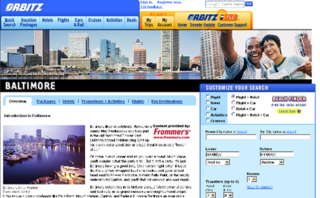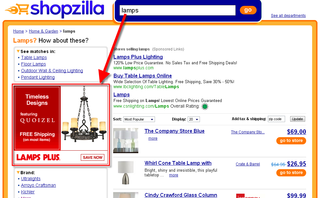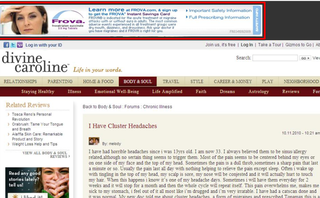This article by Hollis Thomases originally appeared in ClickZ on June 28, 2011.
Not that long ago, online display advertising seemed to be heading for the morgue. Thanks to analysis from eMarketer released earlier this month, however, display has gained some newfound respect. Counting online video, banner ads, rich media, and sponsorships among the mix, eMarketer sees display growing at a faster pace than search advertising. Thanks in large part to branding campaigns, which it sees increasing to 44 percent of all online advertising, eMarketer predicts that by 2015, total dollars spent on display advertising will actually surpass those spent on search.
According to the Interactive Advertising Bureau (IAB), Q1 2011 set an all-time record in Internet advertising with $7.3 billion in revenues, a 23 percent year-over-year increase. A growing component of this increase is online display advertising (banners and video), according to recently released predictions by eMarketer, which estimate that banner ad spending alone will reach $11.73 billion by 2015 - that’s no small potatoes! Factors influencing this increase include high inventory, lower pricing, and the rise of Facebook.
With this new attention focused on display advertising, I thought it would be a good time to recap all the different opportunities for buying and placing this form of online advertising.
By Means of Buying
Single site/direct-to-publisher. The media buyer deals directly with the publisher to negotiate specific placements or custom advertising opportunities on a single site or group of sites within the publisher’s control.
- Specified size and/or placement. Perhaps you have found that a particular size ad, page, or on-page location works best for your advertiser and you only want to include that in your media plan.
- Sponsorship. When an advertiser “hosts” or “owns” a page or section of a website.
- Run of channel/section. Allowing multiple-sized ads to be served throughout a section or “channel” of a site.
- Run of site (ROS). Allowing multiple-sized ads to be served throughout the entire website.
- Custom advertising opportunities. Have an idea for how you’d like your advertising to appear on a particular site? Negotiate directly with that site for a custom solution. It’s called being creative.
Portal. Portals like Yahoo, AOL, and MSN are vast and offer advertisers a diverse array of ways to reach users.
Network. Ad networks allow distribution of ads across a broad array of different websites.
- By target. Some networks offer certain targeting or verticalized capabilities that allow more refined advertising reach.
- Run of network (RON). Like a ROS campaign, RON buys serve multiple-sized ads in unspecified areas throughout the entire ad network.
Ad exchange/DSP. An ad exchange is a marketplace that lets publishers and advertisers connect to sell and purchase online advertising; the demand-side platform (DSP, as it is more commonly known) provides another layer of access, oftentimes enabling buyers to tap into advertising across multiple exchanges.
By Type of Targeting
Though you might have a single display ad campaign, you can serve it by multiple means of targeting to increase your chances for response.
- Geographic. Geographic targeting can take on multiple forms: by country, region, locality, Zip code, and even GPS coordinates (mobile).

- Contextual. In contextual targeting, you can serve display ads based on the nature of the on-page content.
- Keyword. A subset form of contextual targeting that can also stand alone by itself when the advertiser desires to have the ad displayed based on a specific list of on-site keyword searches the user might perform.
- Behavioral. Networks deliver advertising based on a user’s past browsing behavior, making an assumption of behavior and interest and how that relates to the product or service being advertised.
- Retargeting. When ads are delivered off-site to users who did not complete a particular on-site action.
- Psychographic. A form of targeting based on user psychographic profiling.
- Audience self-completed profiles. Gone are the days when all you could get from a user was their sex, age, and Zip code. Now with sites like Facebook and LinkedIn, users volunteer so muchinformation about themselves, it’s hard for an advertiser to resist the temptation to test out advertising that allows you to target based on this profile information.
- Social advertising. New players join the ranks all the time,
- Media6Degrees. A company that facilitates targeting by analyzing a user’s loyalty and relationships.
- Social advertising. New players join the ranks all the time,
- Weather. Like it sounds, weather-targeted advertising enables ad serving only during a particular kind of weather (e.g., snow tires when snow is in the forecast).
- Shopping. Looking for people in the right-now buying mode? Some targeting opportunities include:
- Comparison engines. Comparison shopping engines like Bizrate, Shopzilla, and Nextag can serve display ads based on the products people are searching for.

- Retail websites. Seeing the revenue potential, more and more online retail websites are selling display ad space.
- Buysight (formerly Permuto). An ad-serving platform that analyzes product-specific shopper behavior and buyer intent to decide what ad to serve in real time.
- Comparison engines. Comparison shopping engines like Bizrate, Shopzilla, and Nextag can serve display ads based on the products people are searching for.
- Conversation. For advertisers seeking to tap into online conversations around a particular topic.

- Language. Many publishers develop multiple language versions of their website (particularly in Spanish), which advertisers can specify in order to reach a particular language audience.
- Music. Includes online music delivery platforms like Pandora, Last.fm, and Grooveshark.
By Other Medium
Email. We may take graphical emails for granted these days, but in effect, they are really one big display advertisement. When it comes to buying email display advertising, the options include:
- In-newsletter. Most typical display ad formats can now be purchased within opt-in email newsletters.
- Solo HTML. A publisher sends only one advertiser’s ad or offer in an HTML format to its database or a targeted segment of its database.
- Lead generation. Not so much a format as an objective of how the display ad is created and presented in conjunction with a form completion or a call to action that leads to a web-based form that then generates the lead.
Mobile. Mobile offers many variations on common display formats: banners, videos, coupons, and in-game (see below), but a prevalent format in mobile is “appvertising.”
Instant messenger. With the rise of social networking platforms like Twitter and Facebook, you might not hear as much about IM anymore, but advertisers can still reach those using IM with small-scale versions of banners.
Adware. Adware is ad-supported downloadable software, commonly found these days in toolbars, desktop applications, and games.
Internet TV. Probably still the least widely adopted/newest terrain, Internet TV advertising presents new interactive opportunities to advertisers.
Types of Display Ad Formats
When it comes to display ad formats, eMarketer data shows video as the fastest growing format, likely to surpass rich media by the end of 2011. EMarketer sees growth of all ad formats breaking out like this:
To further break down display ad formats, we have:
-
- Pop-ups.
- Rich media.By using Flash or HTML5, creative developers have been able to produce many interesting variations on rich media ad formats beyond the basic banner, such as:
- Interstitials (aka “between the page” or “transitional”). Interstitial ads appear when the user clicks to advance to another page of a website.
- Floating. When the user scrolls down a web page and the ad “follows” suit.
- Peel-downs. Meant to mimic the peeling or turning of a page, the peel-down starts at the upper right-hand corner of a web page and upon mouse-over “peels down” to reveal the entire ad.
- Push-downs. Push-down ads “force” the page content to contract beneath it so the ad can “grow.”
- Expanding. Ads that expand beyond their originally-displayed boundaries upon mouse-over or click.
- Takeover. Essentially, the ad takes over the entire web page and sometimes “interacts” with what would have been the editorial content.
- Data capture. These ads allow the user to enter their information directly into the ad so they don’t have to necessarily disrupt their current web experience to request information, register for an event, or enter a contest.
See the IAB rich media creative guidelines or Google’s Rich Media Creative Types for more helpful information.
- Video. Everyone’s excited about video, but there are several formats and lots to get acquainted with.
- Hybrids/custom ads. Like much of online advertising, customized ideas have developed from creative minds. Among some custom display ads you might see:
- Banner + text hybrids. Publishers like BlogAds offer this as a standard format.
- Skins. Skins are larger borders surrounding on-page objects like a video viewer or a game and into which ads can be served or inserted.
- “Game-vertising.” Can be static, rich media, or mobile.
- Apps. Mobile and desktop apps offered free to the user in exchange for ad-support.
- E-greeting cards and event invitations. Complete your digital invitation or e-greeting card experience and you’re likely to be shown a page sponsored by one or more advertisers.
- Roadblock. When an advertiser buys out all the advertising across a home page, a site, or multiple sites, usually in a short period of time.
- Widgets.
- Coupon widget. A widget specifically designed to deliver a coupon as the offer.
EMarketer’s research tells us what factors could lead to even more online display ad spending:
What do you think? Will you be buying more display ads now that you’re armed with all this information?
Related posts:
- Ten Ways Online Media Planning Differs From Print
- Is Your Display Ad Budget Shrinking?
- 10 Ways Brands Can Target Moms by Fusing Online Advertising and Social Media
- Improving the Performance of Display Advertising
»
Leave a comment
Web Ad.vantage is a full-service online marketing company with core competencies in search engine optimization, PPC Campaign Management and online media buying. Visit our Internet Marketing Services section to learn more about our full range of services.
WebAdvantage.net encourages the reprinting of our marketing tips and articles. Before doing so, however, please contact us at for permission to do so. The company bio located above is required to accompany any reprint. Thank you in advance for your professional courtesy.
Pragmatic, professional advice with no hidden agenda.

Internet Business Forum






 back to top
back to top






